Life on the land: country program key to addressing rural doctor shortages
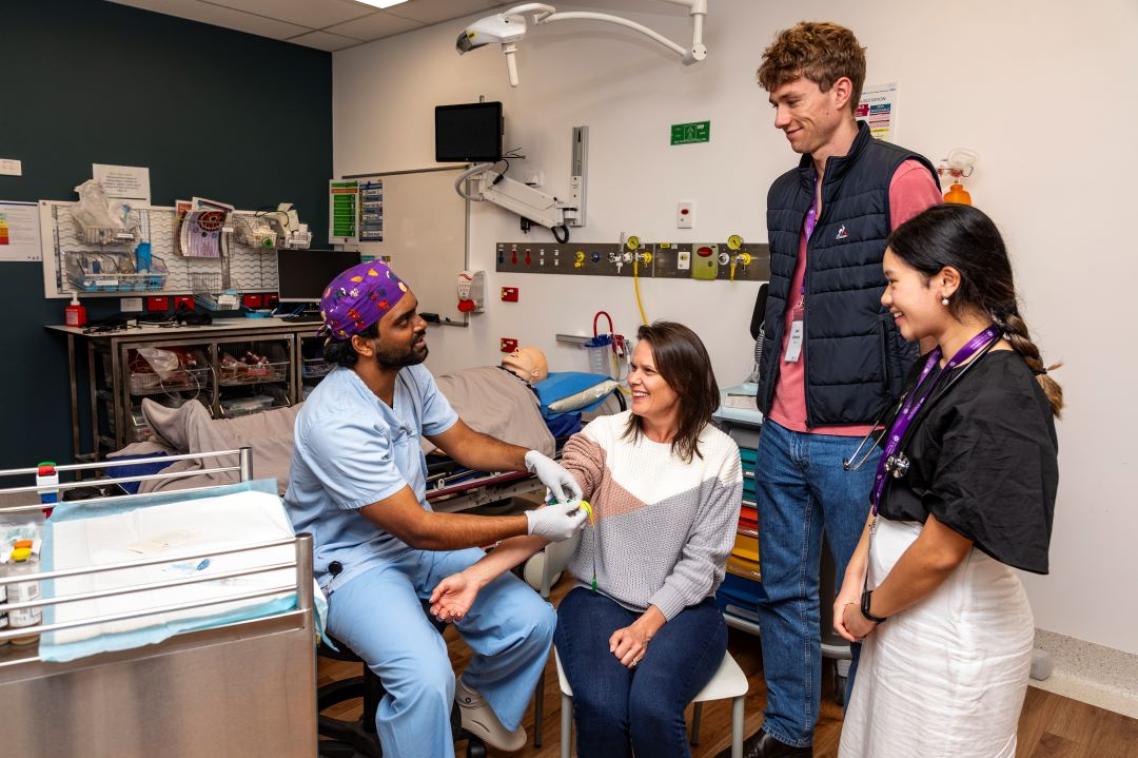
University of Queensland third-year student Sai Pabbati demonstrating patient care techniques to first-year students Jack Cornish and Estella Le.
(Photo credit: The University of Queensland. )
Estella Le is one of thousands of aspiring doctors in Australia at a pivotal point in her career, weighing up the medical field she will eventually specialise in.
While she doesn’t know exactly what form her career will take, she does know she wants to make an impact.
“I always thought about rural medicine because I wanted a career that makes a significant difference to people’s lives,” she said.
“While you can do that in a metropolitan setting, you see direct impact you make with patients in smaller communities.”
Growing up in Brisbane, the first-year University of Queensland medical student found herself itching to return to the country after experiencing rural placements during her undergraduate pharmacy degree.
"Having a bigger scope of practice, a smaller team and being able to be more hands-on with the clinical skills you develop in rural settings suits my goals in medicine," Miss Le said.
You can’t be what you can’t see
The Rural Immersion led by UQ’s Medical School and its Rural Clinical School, exposes students to country life and career opportunities on offer.
It’s part of the school’s vision to deliver world class medical education and research and in turn launching more medical careers in the Australian bush.
The students taking part in the program, are studying UQ’s 4-year Doctor of Medicine program, and visited 1 of 11 country towns across Darling Downs and South West, Wide Bay, West Moreton and Central Queensland as part of their training.
Now in its third year, the immersion involves students touring rural medical facilities, speaking to health professionals and locals, and taking part in experiences reflecting the local character of the town.
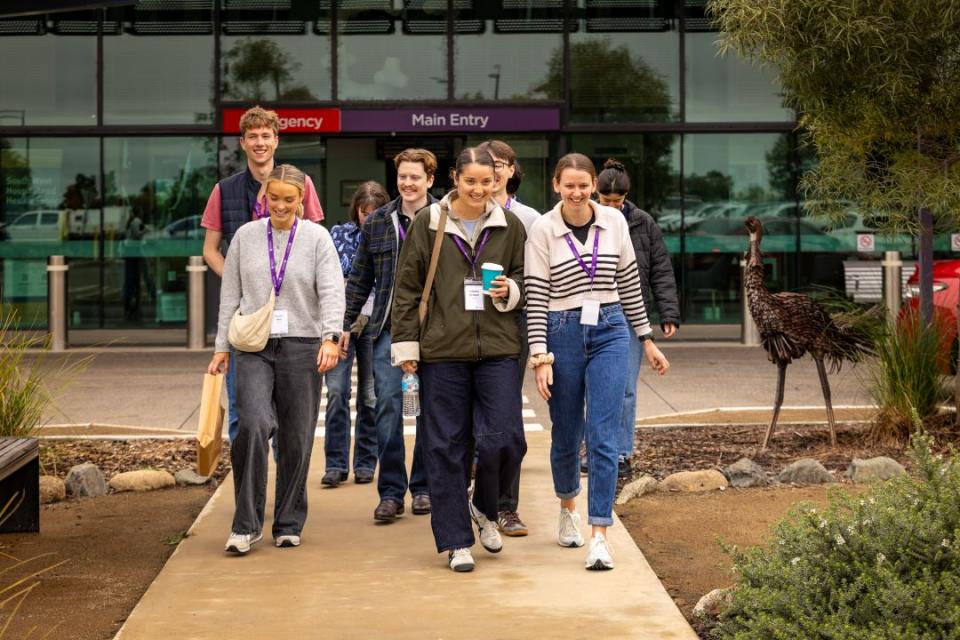
UQ first-year medical students were sent to 1 of 11 country towns as part of the Rural Immersion.
(Photo credit: The University of Queensland.)
Professor Bruce Chater OAM, head of UQ’s Mayne Academy of Rural and Remote Medicine said the program is critical to attracting talent as regions face increased doctor shortages.
“We’ve had students who have been really blown away by the opportunities in rural healthcare,” Professor Chater said.
“It doesn’t mean they’ll all become rural doctors, but you cannot be what you cannot see, so if you don’t get a chance to see rural, there can’t be a chance to become rural.”
Professor Chater, who spent 44 years as a GP in Theodore, 540km north-west of Brisbane, said doctors suitable for life on the land like variety, adventure and challenge.
“You need good training, recognition, remuneration and we’ve got all of that in the bush – it’s a rewarding career.”
The gateway to the outback
This year, Miss Le was one of 10 first-year medical students sent to Roma, a rural town about 450km west of Brisbane, in the heart of Maranoa Region.
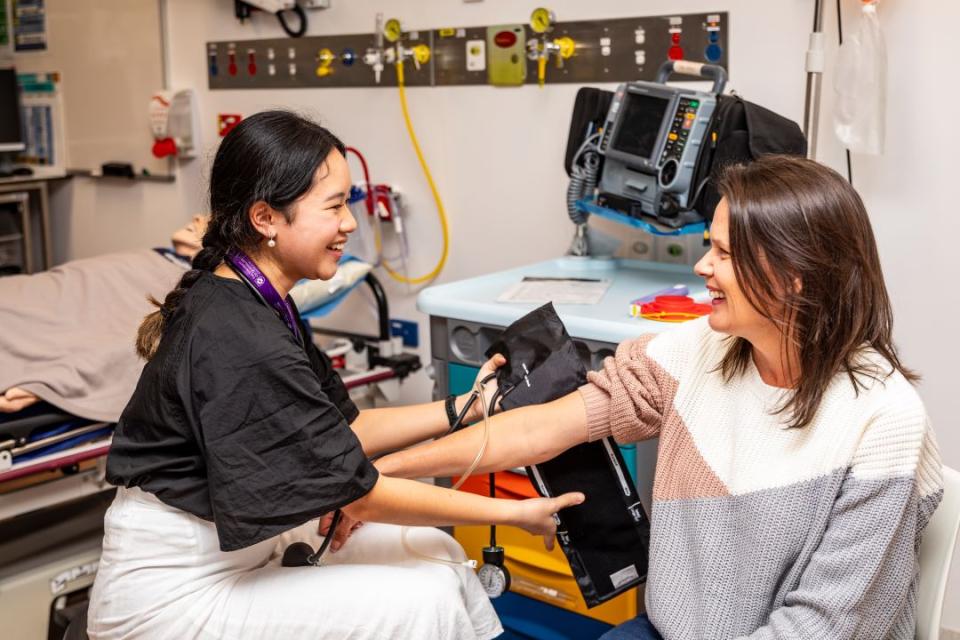
First-year medical student Estella Le practising the basics of patient care in Roma Hospital's simulation training room.
(Photo credit: The University of Queensland.)
Located on the cusp of the outback, the town is home to the largest cattle saleyards in the country, showcases its oil and gas history at The Big Rig, and is known for its abundance of bottle trees adorning the town’s streetscapes.
Students toured Roma Hospital – a multi-million-dollar facility opened in 2021, met with local town leaders, visited aeromedical rescue service LifeFlight, and stayed with local families.
Jack Cornish is another first-year medical student who has grown up in Brisbane, had his eyes opened to the options available in a rural environment.
"Roma appears to be quite close-knit, you see the same familiar faces – whether that's the patients or healthcare professionals," he said.
“I want to keep my options open and experience as much as I can in the cities and rurally, but I’d personally like to come back to Roma,” Mr Cornish said.
Maranoa mayor Wendy Taylor said medical students were paramount for future workforces and they can only benefit from giving them a taste of life in a rural hospital and community.
"Anything we can do to encourage and support young doctors coming out here, we are happy to do that, and they'll have the whole of Maranoa behind them,’’ she said.
Bolstering medical workforces
From next year, Roma will be one of many towns to benefit from the expansion of the Darling Downs South-West Medical Pathway
Up to 144 students will be able to complete their full Doctor of Medicine with the Toowoomba Regional Clinical Unit.
This is one of 4 Rural Clinical School training hubs, also at Rockhampton, Bundaberg and Hervey Bay.
Previously, medical students have been required to complete their first two years of training in Brisbane before moving out to the training hubs.
Since the start of this year, students have had the option to complete their full medical degree at Rockhampton and Bundaberg, while third and fourth-year students can train in Hervey Bay.
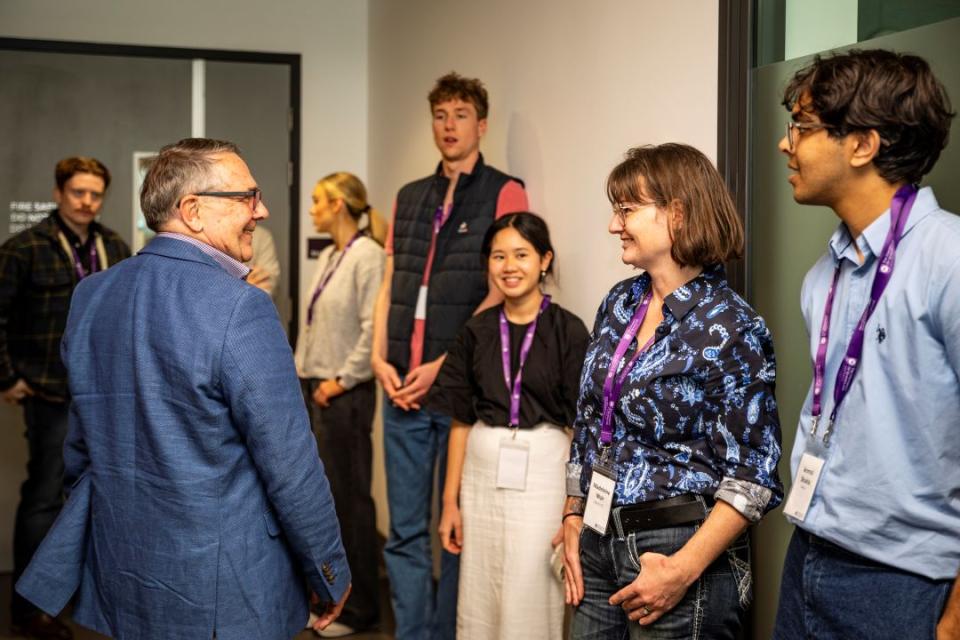
Professor Bruce Chater OAM joins first-year medical students during their tour of Roma Hospital as part of the Rural Immersion.
(Photo credit: The University of Queensland.)
Professor Chater said it means local talent can build their friends and families in the regions.
“We’re very excited that 88 per cent of the student intake into the Darling Downs South West program this year grew up in the area,” Professor Chater said.
“The other 12 per cent came from rural Queensland so they’re not afraid of the bush which is important”.
The changes began in 2023 through a partnership between UQ, University of Southern Queensland, Darling Downs Health and South West Hospital and Health Service.
The partnership further allows students to complete undergraduate, postgraduate and practical training in the region.
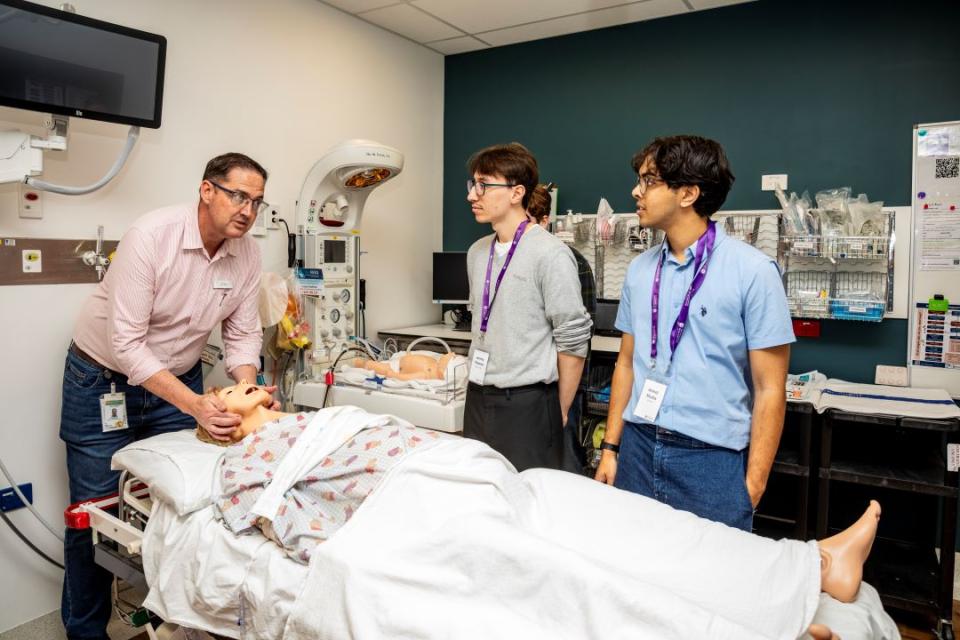
Dr Dan Halliday demonstrates best practices in patient care to first-year medical students Jeremy Petsetas and Anmol Shuklar in Roma Hospital's simulation room.
(Photo credit: The University of Queensland.)
Dr Dan Halliday, Director of Medical Services at Roma Hospital, was part of UQ’s first cohort at Toowoomba Regional Clinical Unit during his fourth year of studying medicine.
He said there are significant disparities in health provision and access to care in Australia’s rural populations.
“The end-to-end training pathway is critical in attracting kids from high school within our local environments,” he said.
“It’s not only about the career, but the lifestyle and community.
“We would be offering them a full package to relocate should they be from metropolitan centres but to also come back to the communities that they potentially grew up in.”
A perfect storm
Rural Clinical School data shows programs such as the rural immersion program are making a difference.
Student tracking data shows the longer medical students spend in the country, the more likely they will intern and choose careers in similar settings.
The school also found students who complete a 12-week placement in small rural towns are 3 times more likely to work in similar communities post-graduation.

First-year medical students explore Roma Hospital during their Rural Immersion program.
(Photo credit: The University of Queensland.)
Those who complete 2 years in a large regional centre are 2.5 to 4.5 times more likely to work rurally, the higher % being those from a rural background.
Since the Rural Clinical School’s establishment in 2002, student numbers have increased more than sevenfold, growing from 31 to 223 as of 2024.
“We’ve got the perfect storm in a good way,’’ Professor Chater said.
“We’ve got a situation where young people can follow their dream, but they do it in a very supported way in Queensland.
“It’s really on a plate for them if they want to choose it.”
A positive experience
Estella Le appreciates the experience of her recent immersion and seeing first-hand what it takes to be a rural doctor.
Next year, she will complete her second year at the Toowoomba Regional Clinical Unit.
“There's a lot you can read on the internet and hear from other people about rural Australia,’’ Miss Le said.
“But once you see for yourself what working in a small team is like, and what is like to form really good relationships with your patients in communities, it has consolidated my view of working in the country.’’
More information about studying UQ’s Doctor of Medicine program, including career pathways including Darling Downs – South West Medical Pathway can be found here.
Media assets
Images and video are available via Dropbox.
Topics
Related articles
UQ welcomes rural clinical schools

Everyday encounters not enough to soften prejudice
Media contact
UQ Communications
communications@uq.edu.au
+61 429 056 139
